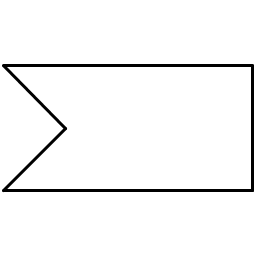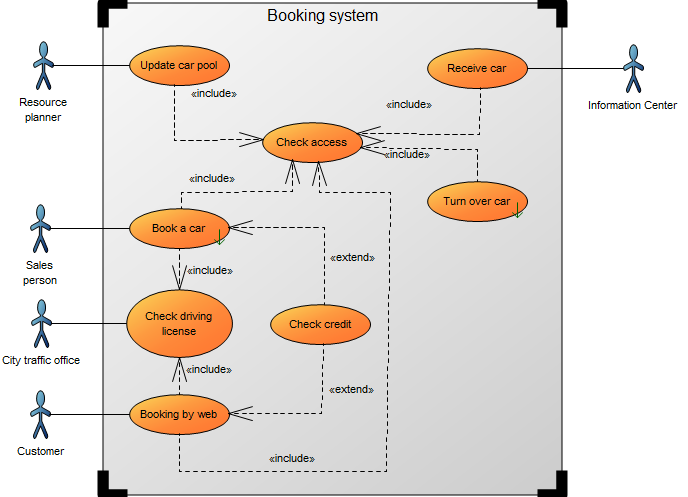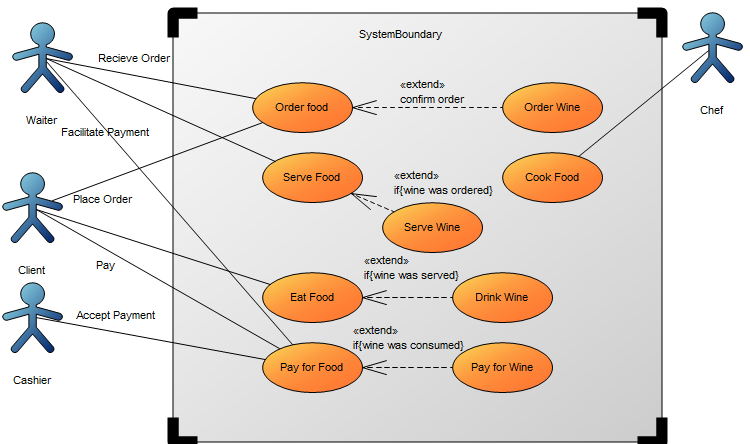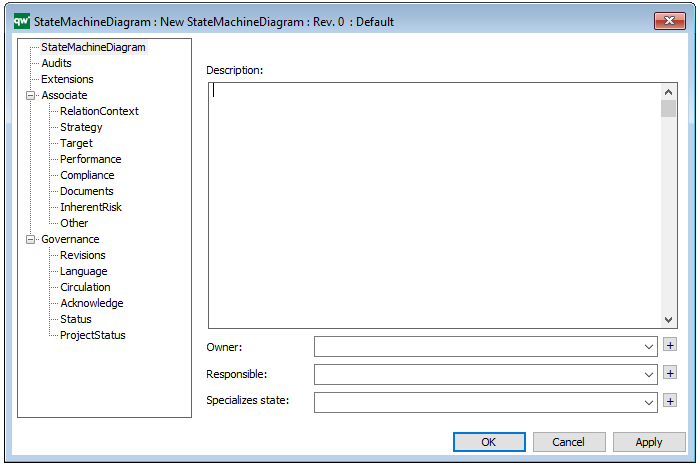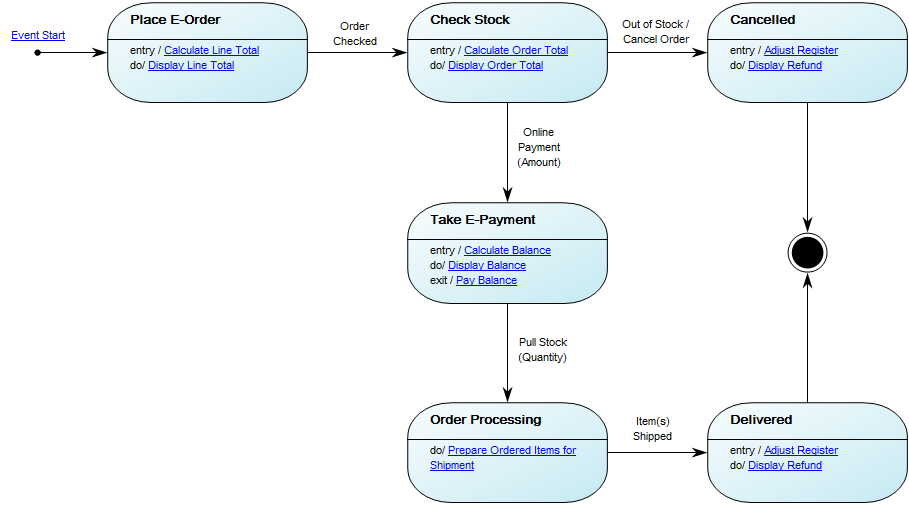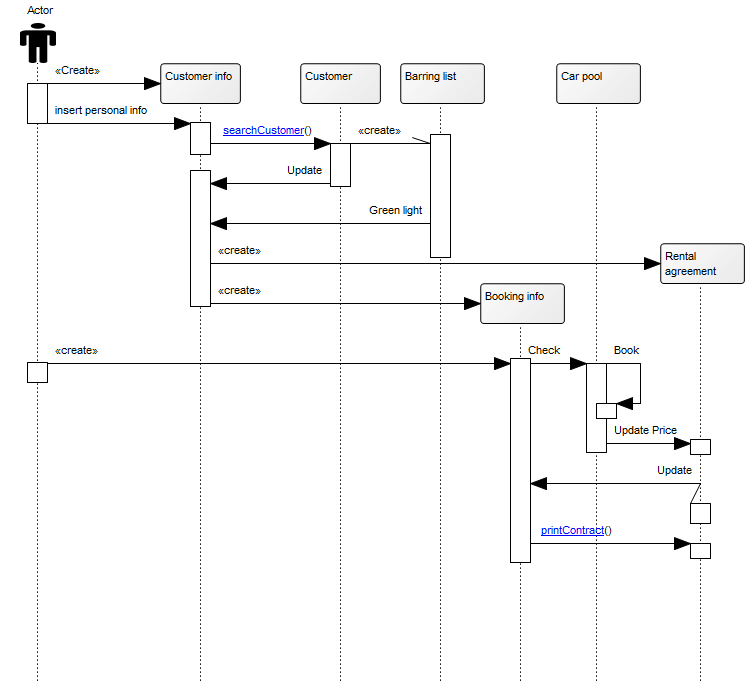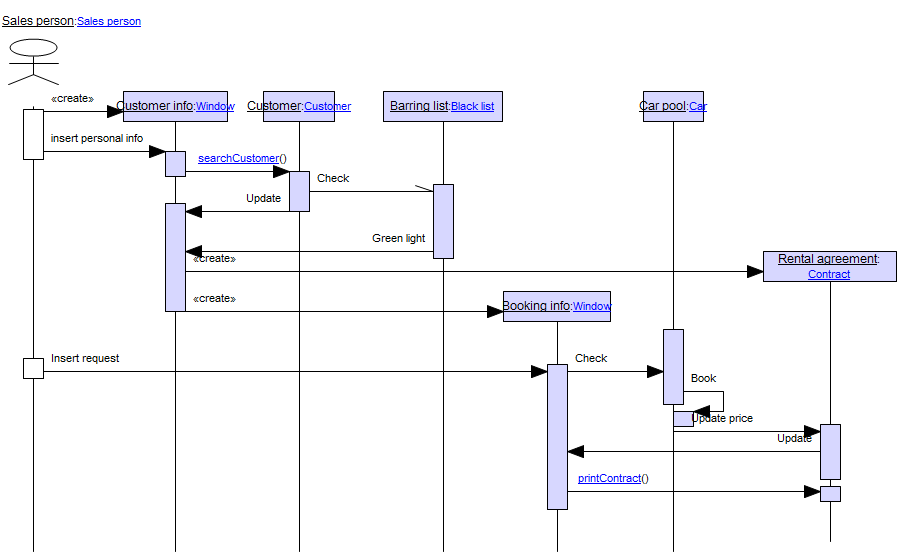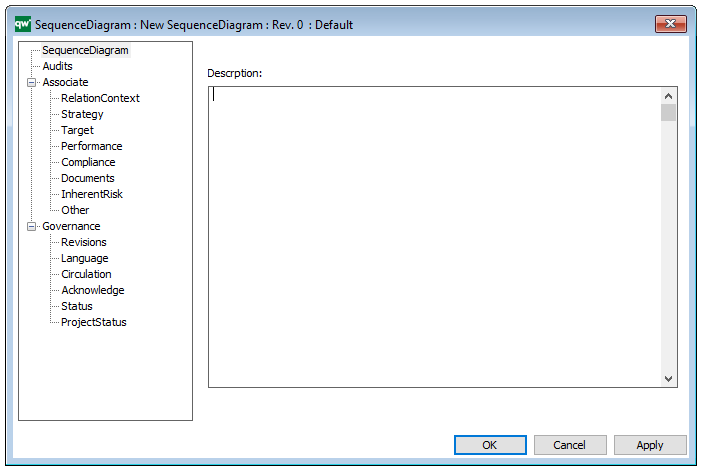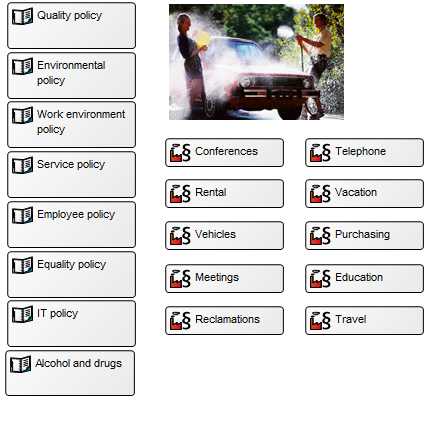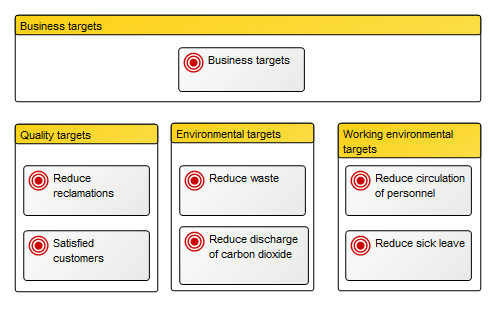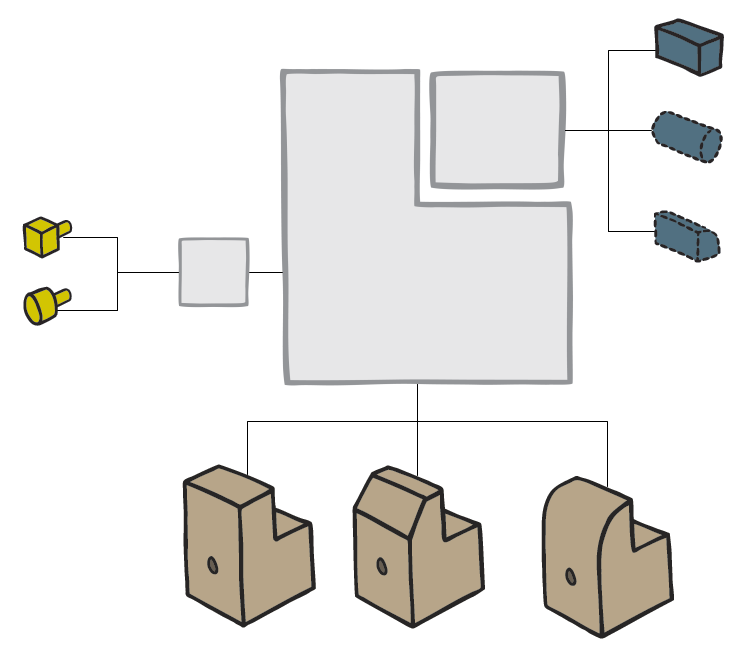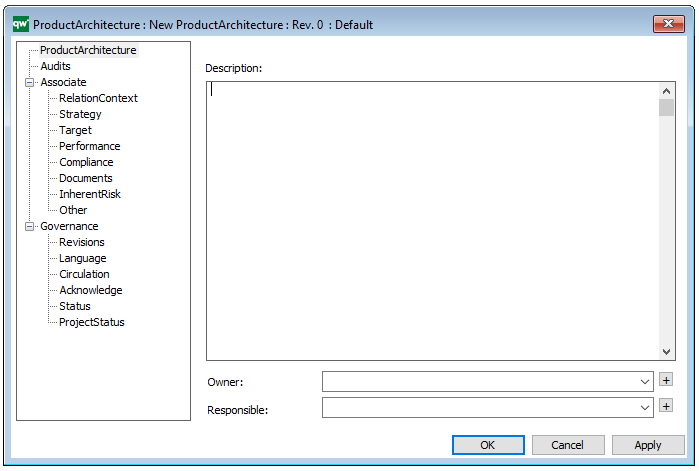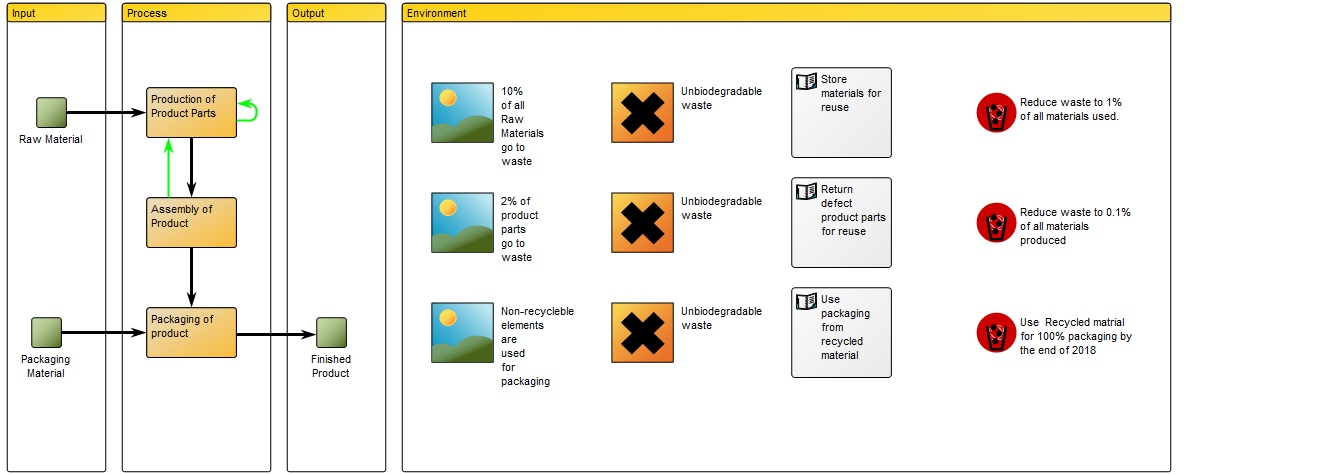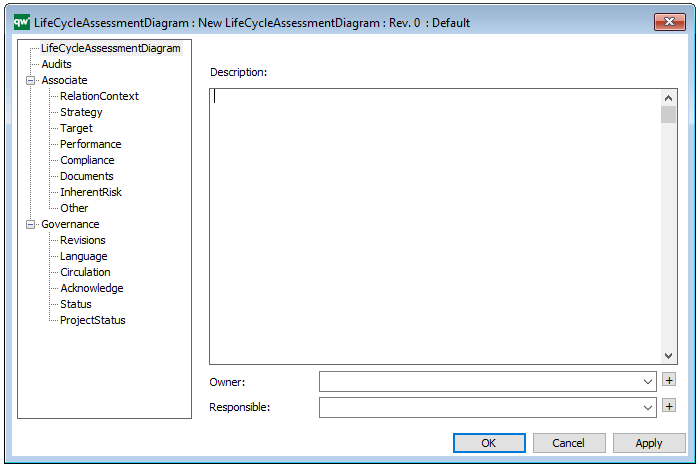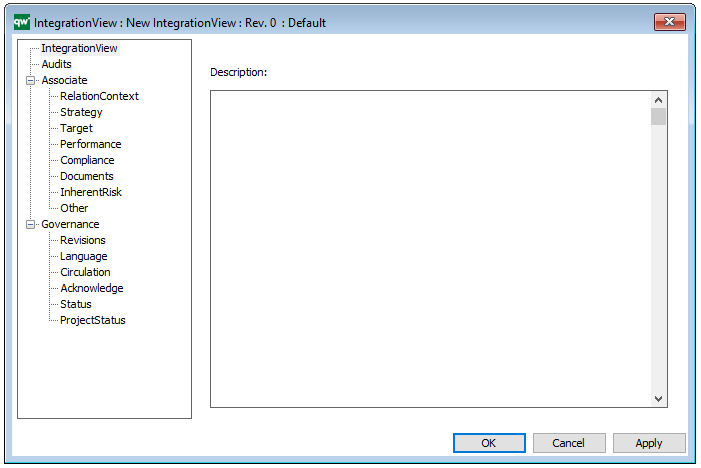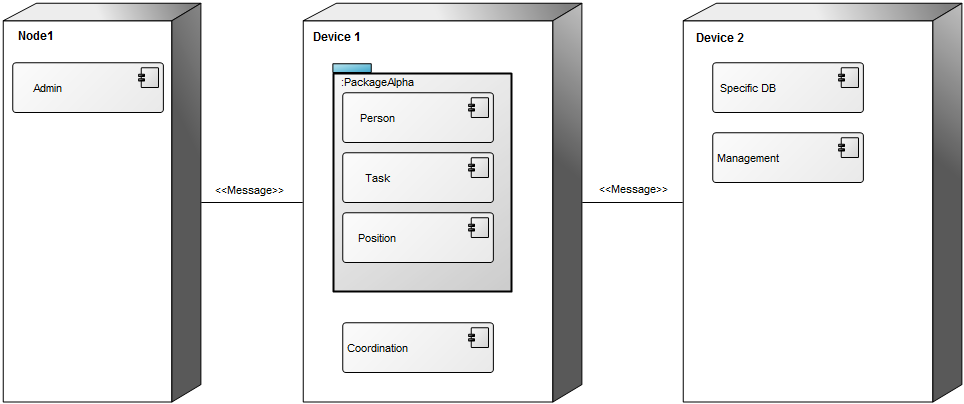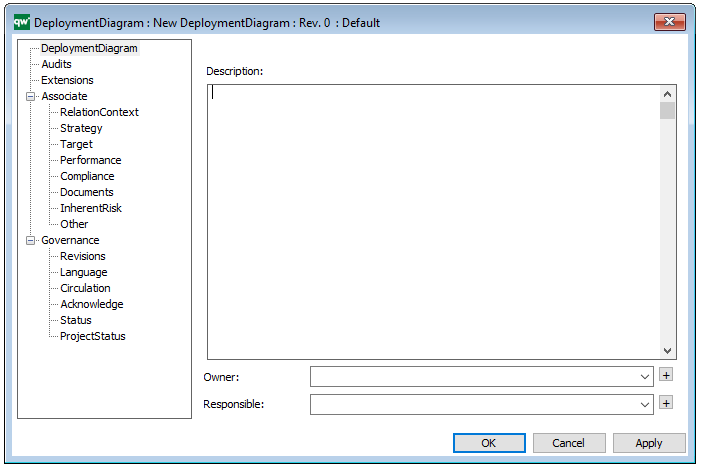In the Unified Modeling Language (UML), an AcceptEventAction waits for the occurrence of one or more Events. If an accepted Event occurrence is for a CallEvent, then a ReplyAction may be used to reply to it. If an accepted Event occurrence is for a SignalEvent, then the received Signal instance may either be unmarshalled immediately into its attribute values, or this may be done later using an UnmarshallAction.
AcceptEventAction is an Action with Triggers for one or more Events. When an AcceptEventAction is executed, it waits for an Event occurrence to be dispatched from the event pool of the context object for its execution that matches one of its Triggers. The context object for an AcceptEventAction is the context object of the Behavior execution within which the AcceptEventAction is executing (which may be the Behavior execution itself. An AcceptEventAction is a wait point, except only the AcceptEventAction waits, rather than the whole Activity (Activities can have other Actions executing while AcceptEventActions are waiting).
If a matching Event occurrence for an AcceptEventAction is dispatched from the event pool, then the AcceptEventAction is enabled to continue. However, if the containing Behavior execution has more than one waiting Trigger that matches the Event occurrence, only one of them will be selected to actually trigger. If the Trigger on the AcceptEventAction is chosen, then it completes and produces output on any result OutputPins.
An AcceptEventAction with a trigger for a SignalEvent is informally called an accept signal action. If an accept signal action has isUnmarshall=false, then it must have a single result OutputPin on which the Signal instance associated with an accepted SignalEvent occurrence is placed. If it has isUnmarshall=true, then it must have result OutputPins corresponding to each of the attributes of the Signal of the SignalEvent (in order), and the attribute values of the Signal instance associated with an accepted SignalEvent occurrence are placed on these OutputPins.
An AcceptEventAction with a trigger for a TimeEvent is informally called a wait time action. A wait time action must have a single result OutputPin. When it accepts a TimeEvent occurrence, then the time value of when the occurrence transpired is placed on the result OutputPin.
If the triggers of an AcceptEventAction are all for ChangeEvents and/or CallEvents, then the AcceptEventAction has no result OutputPins (unless the AcceptEventAction is an AcceptCallAction). If the triggers include SignalEvents and/or TimeEvents along with ChangeEvents and/or CallEvents, then the AcceptEventAction must have isUnmarshall=false and a single result OutputPin, on which a null token is placed in the case of the acceptance of an occurrence of a ChangeEvent or a CallEvent.
NOTE. While an AcceptEventAction can, in general, contain triggers for CallEvents, it cannot accept synchronous calls unless it is an AcceptCallAction.
If one of the triggers of an AcceptEventAction is an AnyReceiveEvent, and the Event occurrence is for a message that is not matched by a SignalEvent or CallEvent trigger on the same AcceptEventAction, then the Event occurrence matches the trigger for the AnyReceiveEvent.
If an AcceptEventAction is used in an Activity, there are special rules for when it is enabled. If the AcceptEventAction has no incoming edges, by the usual rules, it is enabled when its immediately containing Activity (or StructuredActivityNode) begins execution. However, in addition, an AcceptEventAction with no incoming edges remains enabled after it accepts an Event occurrence. That is, it does not terminate after accepting an Event occurrence and outputting any values, but continues to wait for another Event occurrence. Such an AcceptEventAction is terminated when its immediately containing Activity (or StructuredActivityNode) is terminated.
